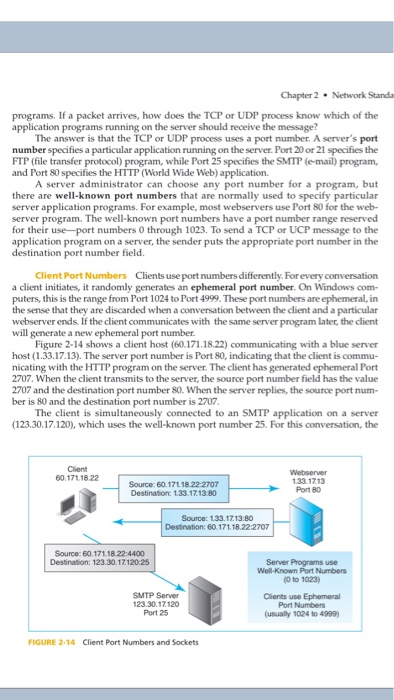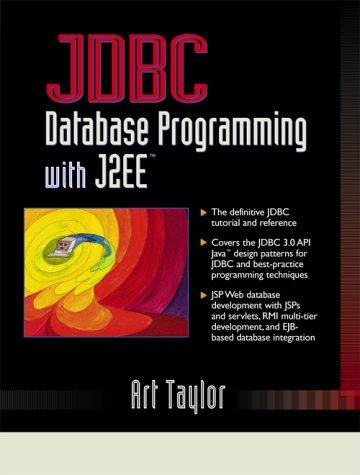1. In figure 2-14 what will be the value in the destination port number if a packet arrives for the email application?
2. When the http program sends an http response message to a client PC, in what field of what message will it place the value of 80?
Chapter 2 Network Standa programs. If a packet arrives, how does the TCP or UDP process know which of the application programs running on the server should receive the message? The answer is that the TCP or UDP process uses a port number. A server's port number specifies a particular application running on the server. Port 20 or 21 specifies the FTP (file transfer protocol) program, while Port 25 specifies the SMIP (e-mail) program, and Port 80 specifies the HTTP (World Wide Web) application. A server administrator can choose any port number for a program, but there are well-known port numbers that are normally used to specify particular server application programs. For example, most webservers use Port 80 for the web- server program. The well-known port numbers have a port number range reserved for their use port numbers 0 through 1023. To send a TCP or UCP message to the application program on a server, the sender puts the appropriate port number in the destination port number field. Client Port Numbers Clients use port numbers differently. For every conversation a client initiates, it randomly generates an ephemeral port number. On Windows com- puters, this is the range from Port 1024 to Port 4999. These port numbers are ephemeral, in the sense that they are discarded when a conversation between the client and a particular webserver ends. If the client communicates with the same server program later, the client will generate a new ephemeral port number. Figure 2-14 shows a client host (60.171.18.22) communicating with a blue server host (1.33.1713). The server port number is Port 80, indicating that the client isconnnu- nicating with the HTTP program on the server. The client has generated ephemeral Port 2707. When the client transmits to the server, the source port number field has the value 2707 and the destination port number 80. When the server replies, the source port num- ber is 80 and the destination port number is 2707 The client is simultaneously connected to an SMTP application on a server (123.30.17.120), which uses the well-known port number 25. For this conversation, the Client 60.1711822 Source: 60.17118 22-2707 Destination 133.171380 Webserver 33 1713 Port 80 Source: 133.1713.80 60.171.18.22-2707 Source: 60.171.1822:4400 Destination: 123.30.1712025 Server Programs use Well-Known Port Numbers 0 to 1023) SMTP Server 23.30.17120 Port 25 Clents use Ephemeral Port Numbers (usually 1024 t0 4999) FIGURE 2-14 Client Port Numbers and Sockets







